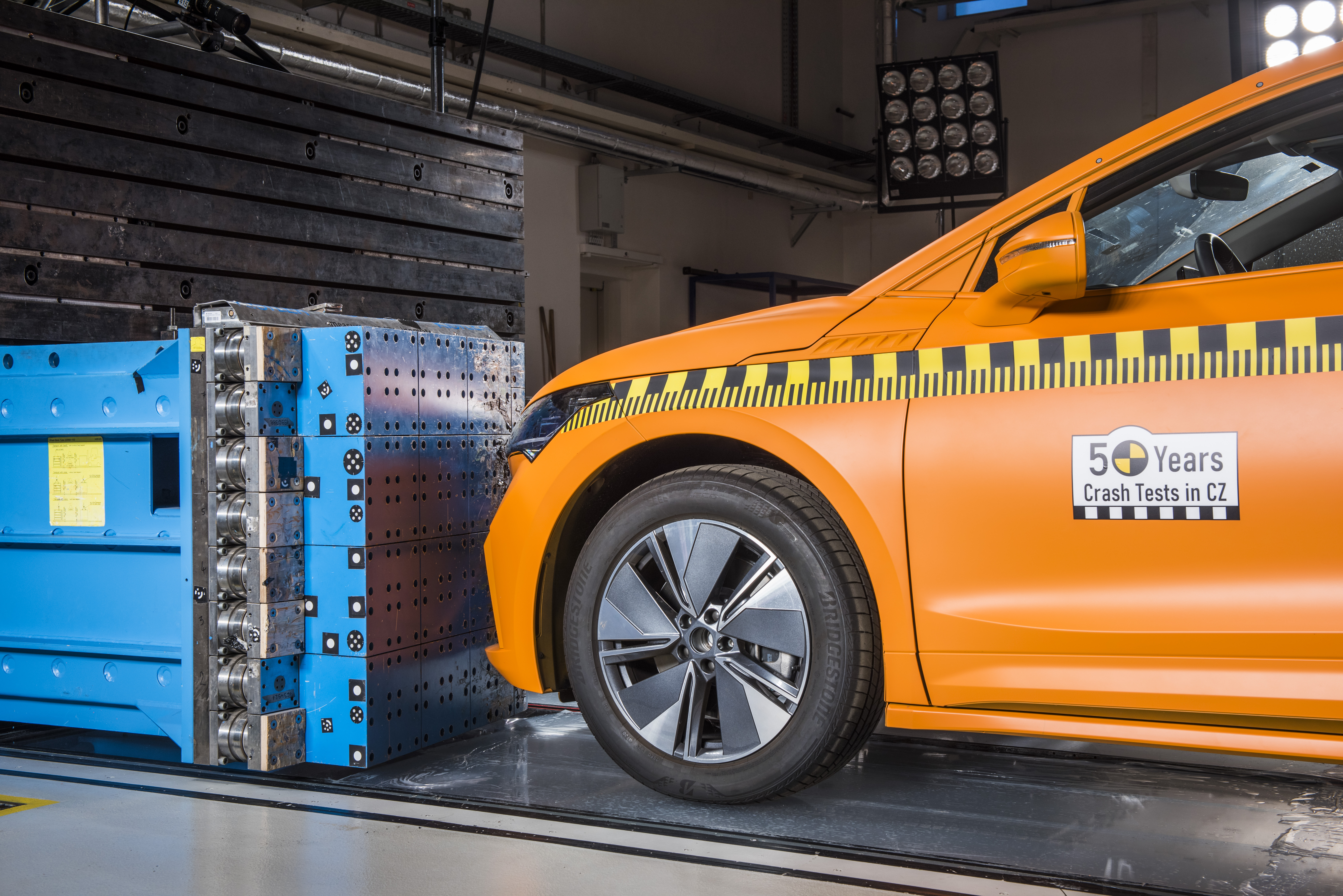Laboratory or film studio?
In the almost 200-metre-long hall ŠKODA can carry out an amazingly wide range of tests, from frontal crashes into solid obstacles, impacts when a barrier or pillar hits the side of a car and various rear impacts, to head-on collisions between two cars.
 The crash track’s lighting system runs at 250 kW and can illuminate the car with up to 120 kilolux.
The crash track’s lighting system runs at 250 kW and can illuminate the car with up to 120 kilolux.
The cars are propelled by a 600 kW Messring drive system, which can accelerate two vehicles weighing up to 3.5 tonnes towards each other up to a speed of 65 km/h, or accelerate one vehicle to 120 km/h. In the first case a track of 80 metres is sufficient, in the second case the entire track is needed.
While the high power of the propulsion system is probably no great surprise, the power of the lighting system probably is. In fact, the array of lights illuminating the collision area above the filming pit has a power output of 250 kW and can generate a light output of up to 120 kilolux on the car itself. The reason for such intense lighting is obvious: the high-speed cameras really need to capture everything in the highest possible quality. There are up to twenty cameras in various positions in each test (some for photogrammetric reasons - these cameras track points on the vehicle). The lighting system only ramps up to full power when the vehicle is in motion, just before the actual crash.
 The trolley that crash test lab uses to simulate impacts.
The trolley that crash test lab uses to simulate impacts.
“Today, of course, it’s all controlled automatically, but when I started here we still had conventional cine cameras and the start of the test and the activation of the cameras had to be coordinated manually. That was my job back in those days,” says Rudolf Tesárek, who witnessed huge progress in crash test filming technology as an employee and later coordinator of ŠKODA’s crash laboratory. The test itself is always really loud. “The airbag explosions are the most deafening noises, of course,” Tesárek explains.

















